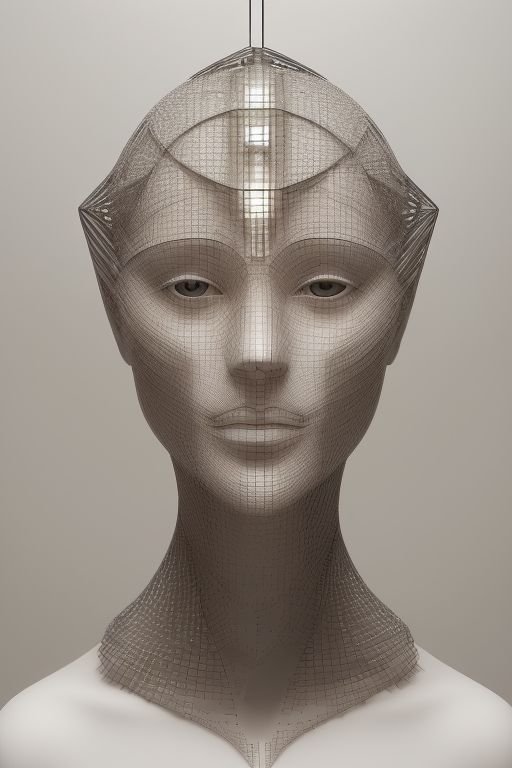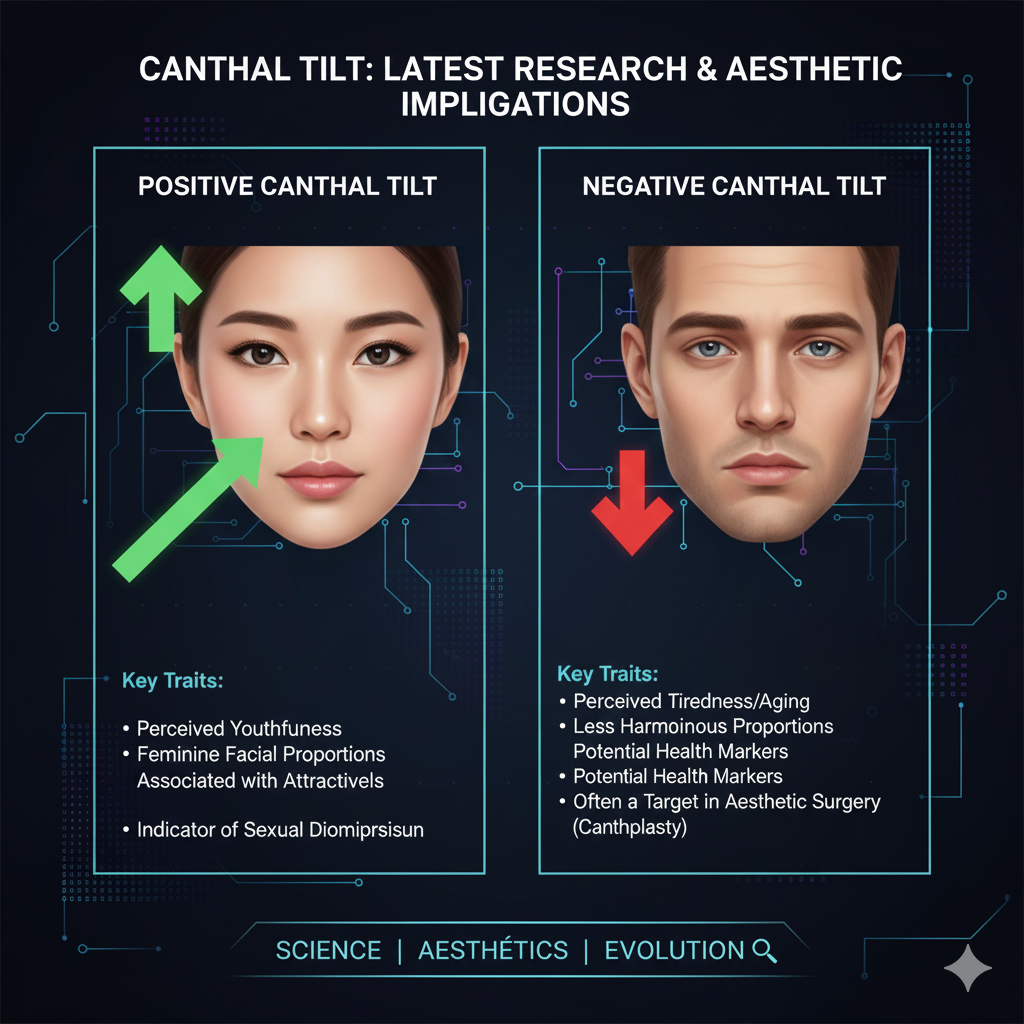The term “hunter eyes” has become increasingly prevalent in discussions surrounding facial aesthetics, particularly within the realms of beauty and attractiveness.
Hunter eyes are often characterized by their deep-set, horizontally align shape, which exudes an intense and penetrating gaze.
This specific eye structure is typically associate with a strong brow ridge and a well-defining orbital area, contributing to a look that is both striking and captivating.
Hunter eyes derive their name from the predatory gaze that is often associate with hunters in the animal kingdom — sharp, focusing, and commanding.
In human facial aesthetics, these eyes are often perceiving as a hallmark of a confident and dominant personality.
They contrast with what are sometimes refers to as “prey eyes,” which are rounder and convey a softer, more approachable demeanor.
One of the critical elements that influence the perception of hunter eyes is the canthal tilt.
This term refers to the angle forming by the inner and outer corners of the eye.

A positive canthal tilt, where the outer corner is higher than the inner corner, is often associate with the hunter eye look.
Conversely, a negative canthal tilt, where the outer corner is lower than the inner corner, can give a more tiring or sad appearance.
The concept of canthal tilt has garnered significant attention in recent years due to its impact on overall facial harmony and attractiveness.
By understanding the nuances between positive and negative canthal tilts, one can better appreciate the subtle yet profound ways in which eye structure influences perception.
As we delve deeper into the characteristics and implications of hunter eyes 👀.
it becomes evident why this particular feature has captivate the interest of both the public and professionals in the field of aesthetics.
The upcoming sections will explore the differences between negative and positive canthal tilts, providing a comprehensive understanding of their role in defining hunter eyes.
The concept of canthal tilt is a critical factor in understanding the aesthetics of the eyes.
It refers to the angle form by an imaginary line drawn between the medial canthus and the lateral canthus of the eye.
The medial canthus is the inner corner of the eye, near the nose, while the lateral canthus is the outer corner, situated closer to the temples.
This angle, known as the canthal tilt, plays a significant role in defining the shape, symmetry, and overall attractiveness of the eyes.
To measure the canthal tilt, one must draw a horizontal line across the eyes, intersecting both the medial and lateral canthi.
If the lateral canthus is position higher than the medial canthus, the eyes are said to have a positive canthal tilt.
Conversely, if the lateral canthus is lower than the medial canthus, the eyes exhibit a negative canthal tilt.
A neutral canthal tilt occurs when both corners are aligned horizontally.
The importance of canthal tilt in determining eye shape and perceive attractiveness cannot be overstate.
A positive canthal tilt is often associated with a more youthful and alert appearance, contributing to what is commonly referred to as “hunter eyes.”
These eyes are characterize by their upward slant, giving an impression of confidence and dynamism.
On the other hand, a negative canthal tilt is typically linked to a tired or aged look, which can affect one’s overall facial harmony.
Understanding the nuances of canthal tilt is essential, not only for aesthetic evaluations but also for medical and reconstructive purposes.
Surgeons often consider canthal tilt when planning procedures to enhance ocular appearance or correct congenital or acquired deformities.
The angle form by the canthi is, therefore, a vital parameter in both cosmetic and clinical contexts, underscoring its relevance in the broader discussion of facial aesthetics.
Characteristics of Negative Canthal Tilt (hunter eyes)
A negative canthal tilt is characterize by the outer corner of the eye, known as the lateral canthus, being position lower than the inner corner, or medial canthus.
This specific eye orientation can significantly influence the overall appearance of the eyes and face.
Individuals with a negative canthal tilt often exhibit a more tired or sad expression, as the downward slant tends to convey a sense of weariness.
This tilt contrasts with a positive canthal tilt, where the outer corners are higher, often associated with a more youthful and alert look.
Several features are commonly associated with a negative canthal tilt.
Firstly, the downward angle of the eyes can make the face appear longer and more drawn-out.
It may also create the illusion of drooping eyelids, which can further contribute to a fatigued appearance.
People with this eye characteristic may find their eye shape to be more almond-like, with a gentle downward slope from the inner to the outer corner.
The impact of a negative canthal tilt on perceived attractiveness is subjective and can vary widely among individuals.
While some may view this eye shape as less aesthetically pleasing due to its association with tiredness, others may find it distinctive and unique.
Societal beauty standards often play a role in shaping these perceptions, and what is deemed attractive can differ across cultures and personal preferences.
Negative canthal tilt can occur naturally due to genetic factors, meaning it is an inherited trait.
However, it can also emerge as a result of aging.
As skin loses its elasticity and facial tissues sag over time, the eyes can adopt a downward slant.
Other factors, such as significant weight loss or certain medical conditions, can also contribute to changes in the canthal tilt.
Understanding the characteristics of a negative canthal tilt provides insight into how this eye orientation affects facial aesthetics and perception.
While it may be viewed differently based on individual and cultural standards of beauty, it remains a unique and distinguishing feature.
Characteristics of Positive Canthal Tilt
Positive canthal tilt refers to the upward angle of the outer corner of the eye relative to the inner corner.
This particular eye feature is often exemplifying by the outer canthus being position higher than the inner canthus, creating an upward slant.
The positive canthal tilt is generally associated with a more youthful, alert, and energetic appearance.
It is widely considered aesthetically pleasing across various cultures.
One of the primary characteristics of a positive canthal tilt is the enhancing perception of vitality and alertness.
Eyes with this tilt often appear more open and awake, contributing to a fresher and more engaging facial expression.
This is in stark contrast to the more tired or aged look that can be associated with a negative canthal tilt, where the outer corner of the eye is lower than the inner corner.
Furthermore, a positive canthal tilt is frequently links to facial harmony and attractiveness.
The upward slant of the eyes can create a balanced and symmetrical look, which is often deem desirable.
This tilt can also accentuate the cheekbones and create a naturally lifted appearance.
enhancing the overall facial structure.
Consequently, individuals with a positive canthal tilt are often perceived as more attractive due to these harmonious facial proportions.
From an aesthetic standpoint, a positive canthal tilt contributes significantly to the perceiving beauty and symmetry of the eyes.
This particular eye feature can enhance the overall appearance.
making the face appear more radiant and expressive.
The positive canthal tilt is not just about the position of the eyes.
it also plays a crucial role in the overall facial aesthetics, contributing to a look that is both youthful and captivating.
Comparative Analysis:
The canthal tilt, which refers to the inclination of the line connecting the inner and outer corners of the eyes.
plays a significant role in facial aesthetics and emotional expression.
A negative canthal tilt is characterizes by an outer corner of the eye that is lower than the inner corner.
In contrast, a positive canthal tilt features an outer corner that is higher than the inner corner.
One of the most apparent differences between a negative and positive canthal tilt is their impact on perceived emotional expression.
Eyes with a negative canthal tilt often convey emotions such as
sadness,
tiredness,
or even a sense of vulnerability.
This perception is due to the downward angle.
It can give the impression of drooping eyelids and a less alert appearance.
Conversely, a positive canthal tilt tends to project emotions such as alertness, friendliness, and youthfulness.
The upward angle of the outer corners of the eyes can make the eyes appear more open and lively.
contributing to a more energetic and welcoming facial expression.
Cultural and individual preferences also play a crucial role in the perception of canthal tilt.
In many Western cultures, a positive canthal tilt is often associated with beauty and attractiveness.
This preference is influence by the cultural emphasis on youthfulness and vitality.
On the other hand, some Eastern cultures may have different standards of beauty.
here a neutral or slightly negative canthal tilt might be more acceptable or even preferring.
Individual preferences can further vary based on personal experiences and subjective tastes.
leading to a diverse spectrum of what is considered aesthetically pleasing.
Overall, the canthal tilt significantly influences facial aesthetics and emotional perception.
Whether a negative or positive tilt is deemed more attractive can depend on various factors.
including cultural norms and individual preferences.
underscoring the complexity and diversity of human beauty standards.
The Role of Genetics and Aging
The canthal tilt, the angle formed by the inner and outer corners of the eyes, can be significantly influence by both genetics and aging.
Genetic predisposition plays a vital role in determining an individual’s eye shape and tilt from birth.
Specific genetic markers inherite from parents can influence the development of the eye’s structure.
including the canthal tilt, resulting in a natural variation among individuals.
Some people are naturally born with a positive canthal tilt, where the outer corner of the eye is higher than the inner corner.
which is often associate with a more youthful and alert appearance.
Aging, on the other hand, can have a profound impact on the canthal tilt.
As individuals age, several structural changes occur in the eyelids and surrounding tissues.
The skin loses its elasticity, and the supporting structures of the eye.
such as the orbital septum and the canthal tendons, can weaken over time.

This weakening can cause a shift in the canthal tilt from positive to negative.
where the outer corner of the eye droops below the inner corner, giving a more tiring or age appearance.
Furthermore, the natural degradation of collagen and elastin in the skin contributes to the sagging of the eyelid tissues.
This process is compound by gravitational forces that continuously act on the facial structures, exacerbating the downward shift of the outer eye corner.
Additionally, fat redistribution and atrophy around the eyes can accentuate the negative canthal tilt, further contributing to the aging look.
Understanding the role of genetics and aging in determining canthal tilt is essential for recognizing the underlying causes of these changes.
While genetic predisposition sets the baseline for eye shape and tilt.
the aging process can alter these features over time.
leading to noticeable differences in appearance.
By acknowledging these factors, individuals and medical professionals can better approach interventions that aim to maintain or restore a positive canthal tilt.
thereby enhancing facial aesthetics and perceives youthfulness.
Surgical and Non-Surgical Interventions
Modifying the canthal tilt to achieve a more aesthetically pleasing appearance can be accomplishes through various surgical and non-surgical methods.
Surgical options, such as canthoplasty and blepharoplasty, offer permanent solutions by physically altering the structure of the eye area.
Canthoplasty is a surgical procedure that involves tightening or repositioning the lateral canthus (outer corner of the eye).
This technique is often employee to correct a negative canthal tilt.
creating a more upward and youthful eye appearance.
Canthoplasty is typically perform under local anesthesia.
and the recovery period can range from one to two weeks.
depending on the individual’s healing process.
Blepharoplasty, commonly known as eyelid surgery, can also impact canthal tilt.
While primarily aimed at removing excess skin and fat from the eyelids.
this procedure can be combine with canthoplasty to enhance the overall eye contour.
The recovery time for blepharoplasty usually spans one to two weeks.
during which patients may experience swelling and bruising.
For those seeking less invasive alternatives, non-surgical interventions such as dermal fillers and thread lifts offer temporary solutions.
Dermal fillers can be inject around the eye area to provide subtle lifts and improve the appearance of a negative canthal tilt.
The effects of fillers typically last six months to a year, with minimal downtime post-procedure.
Thread lifts involve the insertion of temporary sutures to lift and tighten the skin around the eyes.
This minimally invasive procedure can enhance the canthal tilt without the need for surgery.
Recovery from a thread lift is relatively quick, with most individuals resuming normal activities within a few days.
Each option presents its own set of risks and benefits.
Surgical procedures like canthoplasty and blepharoplasty offer long-lasting results but come with inherent surgical risks and longer recovery times.
Non-surgical treatments provide quicker recovery and less risk but require maintenance to sustain the desired effects.
Consulting with a qualified medical professional is essential to determine the most suitable intervention based on individual needs and goals.
Embracing Natural Variations
In the exploration of hunter eyes and the distinctions between negative and positive canthal tilts.
it is crucial to recognize and embrace the natural variations that exist in eye shapes and tilts.
Beauty, as a concept, is deeply subjective and diverse, manifesting in myriad forms.
Each individual’s unique features, including the specific characteristics of their eyes, contribute to their distinct attractiveness. hunter eyes
The push towards a singular ideal of beauty, particularly one centered on physical attributes like eye shape.
often overlooks the profound beauty that lies in diversity.
Confidence plays a pivotal role in enhancing one’s attractiveness.
often more so than any specific physical trait.
When individuals appreciate and embrace their natural features.
They exude a level of self-assuredness that is both appealing and inspiring.
This self-confidence can significantly influence how others perceive them.
making confidence an essential component of beauty.
Moreover, there is a growing movement towards self-acceptance and the reduction of societal pressures to conform to certain beauty standards.
This shift encourages individuals to celebrate their distinctive features rather than striving to fit into a narrow mold.
Recognizing that beauty comes in many forms.
this movement promotes a more inclusive understanding of attractiveness.
So, the emphasis is on personal uniqueness rather than conformity.
Ultimately, the journey towards self-acceptance.
and the appreciation of natural variations in eye shapes and other physical traits is a deeply personal one.
By fostering a greater acceptance of these variations.
society can move towards a more inclusive and realistic standard of beauty.
every individual feels valued and confident in their own skin.
Please share and comment about hunter eye’s 🙏 for more real content.












